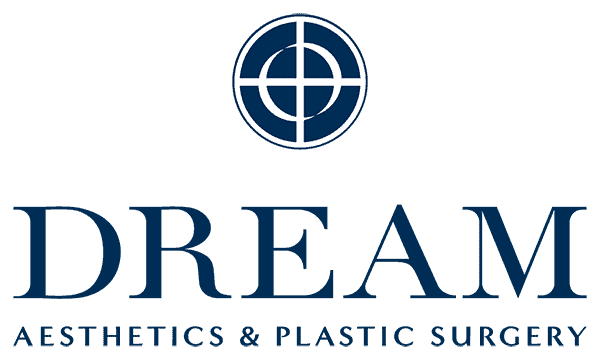
DREAM
Nano Facial Fat Grafting

Procedure Time
1 – 1.5 Hours

Anaesthesia
Light Sedation

Recovery Period
10 – 14 Days

Stitch Removal
7 Days Post-op
What is Nano Facial Fat Grafting
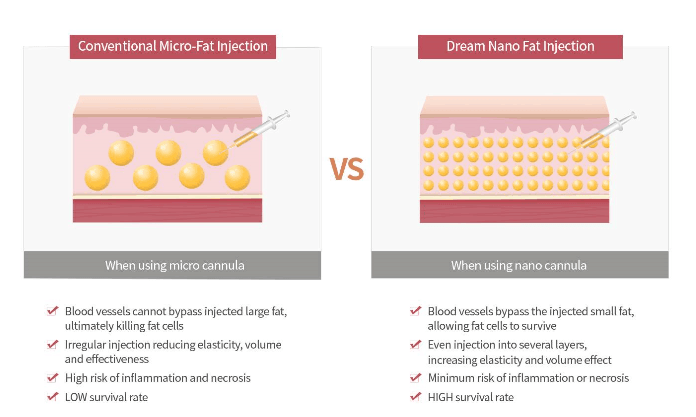
Nano facial fat grafting is a technique, in which fat is harvested from another site of the body, processed, and then injected into the volume-deficient areas of the face. It is used as an aesthetic procedure to improve the facial contours, soften the facial features, fill up the hollow areas, fade wrinkles, etc.
Features of Nano Facial Fat Grafting
Some of the key features of Nano facial fat grafting include:
- A natural approach using the patient’s own fat, minimising the risk of allergic reactions.
- Versatility in treating scars, depressions, wrinkles, and other cosmetic concerns.
- Longer-lasting, natural-looking results compared to dermal fillers.
- Minimal downtime, with most patients resuming daily activities in a few days.
Who Needs Nano Fat Injection?
Nano fat injection can address a range of cosmetics concerns, making it a versatile option for different needs. Common reasons for choosing this procedure include:
- Reducing facial creases, wrinkles, and signs of ageing.
- Seeking a longer-lasting wrinkle correction compared to temporary dermal fillers.
- Enhancing facial contours and improving the appearance of scars.
- Filling facial depressions to achieve a rejuvenated look.
- Minimising the risk of allergic reactions by using the patient’s own fat.
Facial Areas Suitable For Fat Grafting
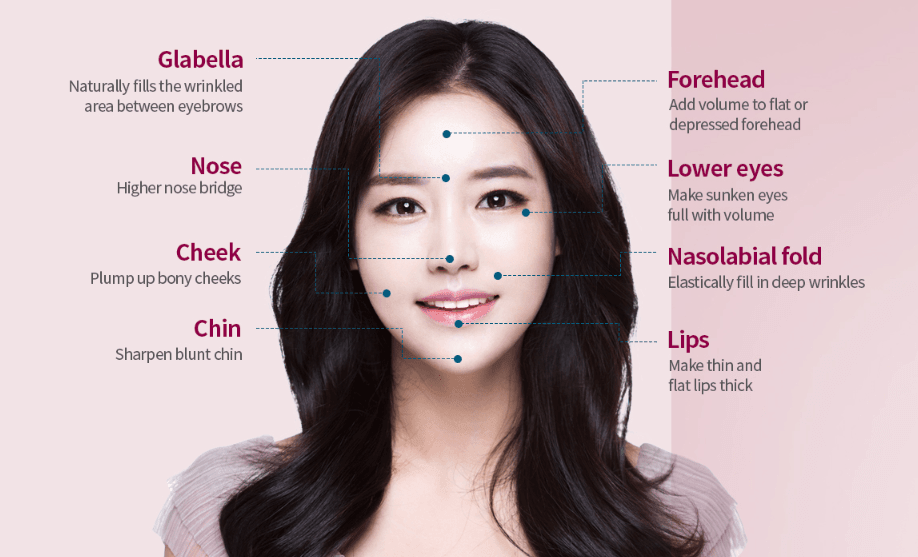
Fat transfer to the face is quite effective in restoring facial fullness by targeting multiple areas of the face. As a result, one can effectively reverse the signs of ageing showing on their face. With face fat grafting, one can address volume loss in:
- Forehead
- Cheeks
- Jowls
- Under the Eyes
- Nasolabial Folds
- Lips
Facial Fat Grafting Procedure
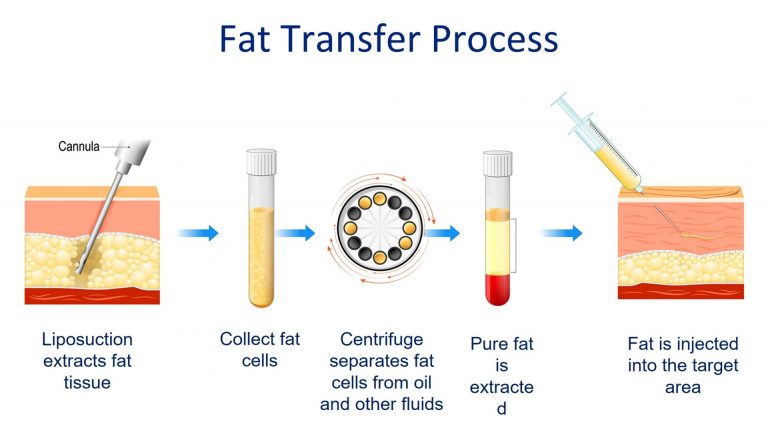
Face fat grafting is generally completed in a 3-step step procedure where the fat is harvested, purified, and then re-injected into the desired areas. To ensure comfort, the procedure begins with intravenous sedation and local anaesthesia. After that, the following steps are performed:
Step 1: Fat Removal
The surgeon extracts fat tissue from fat-rich areas such as the thighs, lower back, hips, buttocks, or abdomen, based on the patient’s consent. This is done using a liposuction technique and specialised equipment to preserve the quality of the harvested fat and minimise tissue damage.
Step 2: Fat Cell Isolation/Purification
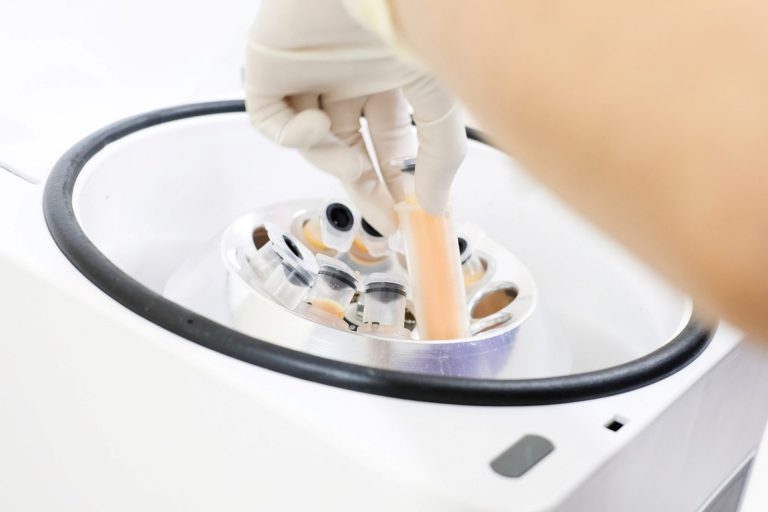
Once the fat is harvested, it is processed in a centrifuge to isolate and purify it. This process removes damaged or dead fat cells, along with any excess fluids, leaving only healthy and viable fat cells for transfer. These purified cells are more likely to integrate effectively into the target area and maintain their viability for years.
Step 3: Fat Re-injection
The purified fat is meticulously injected into the targeted areas of the face. To achieve optimal results, the injections are administered at varying depths, ensuring even distribution and natural-looking enhancement. Following the procedure, the treated facial areas appear smoother and fuller, restoring a more youthful appearance.
Recovery From Facial Fat Grafting
Liposuction Area
The area where fat is removed through liposuction may experience mild bruising and discomfort. These effects are temporary and typically subside within about two weeks.
Fat Injection Area
The treated areas on the face may appear swollen due to both the swelling and the additional fat injected. Some bruising may also occur. Swelling typically subsides within 2–4 weeks, and as the transferred fat integrates with the surrounding tissues over the following months, the results will stabilise, providing a smoother and fuller appearance.
Frequently Asked Questions (FAQ) about Facial Fat Grafting in Singapore
Do I Need A Lot Of Fat For Facial Fat Injection? Does Taking Fat Leave A Dent?
The amount of fat needed for facial fat grafting is relatively small, making the procedure suitable even for patients with a slim build.
Since only a small quantity of fat is required, harvesting fat from areas like the abdomen, thighs, or hips does not cause noticeable dents or irregularities. For example, while traditional liposuction may remove around 500 cc of fat from the love handles, facial fat grafting typically requires only 50 to 80 cc—a negligible amount that does not significantly affect the appearance of the area where the fat was taken.
Am I The Right Candidate For Face Fat Grafting?
For each facial grafting procedure, there are different requirements, and those will be assessed during your initial consultation. In general, the basic requirements for face fat grating include;
- You should be healthy and active
- You should have realistic expectations about the results
- You must have adequate fat to harvest
- You must be committed to healthy lifestyle choices.
When Will I Be Able To Exercise After Fat Grafting?
Most surgeons recommend getting back to light physical activity at about 10 to 14 days. In any case, surgeons don’t want their patients indulging themselves in activities that could interfere with the outcomes of the fat grafts. The patient can resume their usual physical activities after 4 weeks following the procedure.
How Much Does Fat Grafting Cost in Singapore
The cost of fat grafting (fat transfer) in Singapore varies from doctor to doctor, the fat grafting technique used, and location. The cost of fat grafting can also be affected by variables such as the surgery facility, medical tests, anesthesia, post-surgery prescription (if any), and other miscellaneous costs. On average, the procedure can be as low as $3,000 and as high as $10,000 or more.
It is recommended that you discuss the cost of your fat transfer procedure with your surgeon before you go ahead with it.
Is Facial Fat Grafting Permanent?
Results can vary from person to person. Many patients experience natural-looking, long-lasting outcomes that can persist for several years. During your consultation, the surgeon will provide detailed information and personalised advice based on your specific goals and circumstances.
Can Fatty Tissue Be Frozen Or Stored?
Studies have proven that storing or freezing your fat kills fat cells. Therefore, liposuction and fat grafting is done on the same day for optimal results.
Will I Look Fatter After Fat Grafting?
This is one of the most common concerns expressed by the patients before the surgery. However, it’s just a myth and you will not experience a bulky look following fat grafting. The plastic surgeon just places fatty tissue along hollow areas of the face, e.g., around the eyes, the anterior chin, and cheeks.
Placing fat on the neck and jowls would make you look fatter, which is not a standard procedure done by plastic surgeons. Additionally, if you have a slightly heavier jowls or neck, grafting fat into the hollow facial areas can rebalance your facial proportion and result in a slimmer look.
